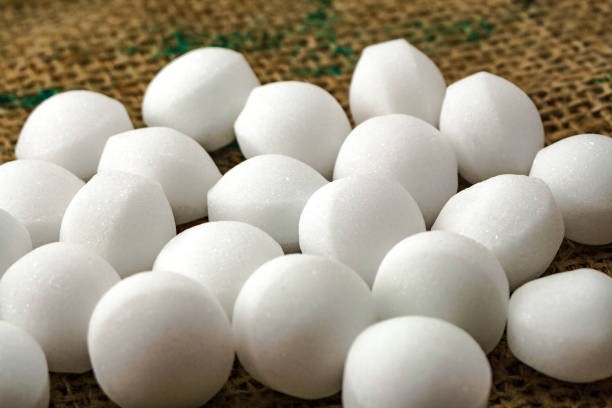
I receive a lot of emails from frustrated readers. They have learned about the National Toxicology Program’s designation that mothballs are potential carcinogens and have removed them from their home. Yet, can’t rid their clothes or furniture of the toxic smell of mothballs. They are also looking for effective, non-toxic mothball alternatives.
Air it Out
The first is an interesting question because there is only one thing known to remove mothball odors. The bad news about removing the smell of mothballs is that it is not easy. The only way that I know of to remove the smell (and this is confirmed by many discussions with other experts) is by putting the clothing and furniture in the sun. Keep repeating until the smell is gone. Before packing woolens away, there are a number of important steps to take to prevent moths, including washing the wool. Here, you can learn about how to wet clean wool without shrinkage, how to make your own natural moth balls (repellent sachets), and what to do if you already have clothing moths.
Keep Moths Away
To Repel clothing moths you will need to do the following:
1. Clean woolen items before storing. To wet-clean wool, the key is not to shrink the wool item. Never twist it, agitate it, or wring it out. Gently swirl the wool in the water, then rinse and press the water out. Wool is an acidic material, so use a shampoo with its acidic pH or an acidic detergent. Any soap or detergent with a pH above 8 will harm wool. To lower the pH of a soap or detergent, add 1 tablespoon of white distilled vinegar or lemon juice before washing. Water temperature, when washing wool, should be around 100 F. Block wool, lay it flat and shape it before drying.
2. Air dry woolen clothing in the sun for a few hours before packing them away.
3. Make your own alternative mothball repellent sachets. These sachets are lovely to tuck into sweater drawers and hang in closets. Most health food stores sell the bulk dried herbs needed to make these repellants.
Ingredients needed are 2 ounces each of dried rosemary and mint, 1 ounce each of dried thyme and ginseng, and 8 ounces of whole cloves. Combine the ingredients in a large bowl. Blend. Make sachets by choosing a 4 x 4 inch piece of natural fiber with a tight weave, such as silk. Sew three sides together, then fill with the herbs and sew the fourth side shut. You can adapt this pattern to any size you want (2 x 2 is the traditional size for the undergarments drawer, for example).
A good idea for small sachets is to fill cotton tea bags sold for making your own tea (these are often sold in health food stores). If you are really in a rush, tie the herbs up in a cotton bandana or handkerchief. Place the herbs in the middle and gather the edges together to tie with a ribbon. Other herbs that are good for repelling moths include lavender, lemon, sweet woodruff, and tansy.
4. Completely seal clean woolen items in bags, boxes, and chests. Cedar chests help repel moths, but they must be sealed.
5. If you see moths, freeze the item of clothing for two days in the freezer. If you have wool moths already, the best spray is to make one by adding 1/4 cup of neem oil to 1/2 gallon water, a dab of liquid castile soap in a spray bottle.
By Annie B. Bond, best-selling and award-winning author of five green living books, thousands of blogs, and all the tips in the Greenify Everything app. Called “The Godmother of Green” by Martha Stewart Sirius Radio.



